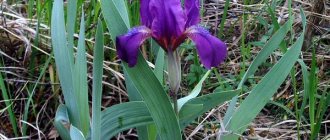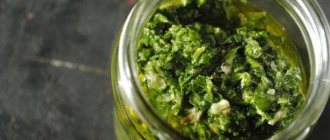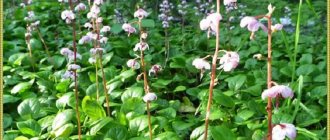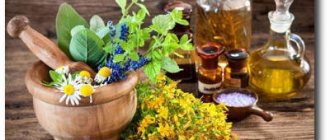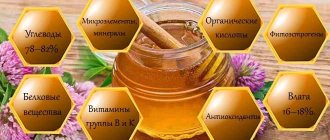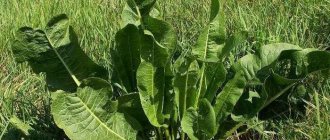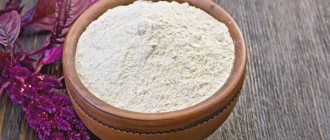Description, reproduction and distribution area of hogweed
A perennial plant with a powerful, hollow, ribbed stem growing up to 150 cm.
The stem is covered with hard hairs, the branches are located in its upper part. It has a pleasant, slightly perceptible spicy odor. The plant is distinguished by a powerful root system and has large leaves that grow about half a meter in length.
The petioles are stem-embracing and, like the stem, are covered with scales. The upper surface of the leaves is smooth, hairiness is noted along the midrib.
The plant blooms in June-July. White flowers are collected in a large umbrella.
The fruits of hogweed (double-grass) appear in August.
Hogweed grows in central Russia, in Siberia, the Urals, the Caucasus, Udmurtia, and Altai. There are about 70 species of hogweed. This plant can reproduce by self-sowing
ATTENTION! Hogweed is a poisonous plant.
Some types of hogweed are extremely poisonous plants that can even damage the human respiratory system. They can be found in fields, in garden plots, on the banks of reservoirs and in wastelands. Hogweed poses the greatest danger in the summer. Severe allergies can be caused by the smell, pollen and sap of a poisonous plant; there are cases where people received toxic poisoning. The coumarin and essential oils contained in the plant contribute to the formation of burns when touched. Subsequently, painful conditions may occur, accompanied by nausea, vomiting, headache, and dizziness.
During flowering, hogweed is especially dangerous. The juice of the plant, when it gets on open areas of the skin, increases its sensitivity to the sun's rays, under their influence burns and then blisters appear. Hogweed poses a huge threat to people susceptible to allergic diseases; the reaction can be the most unpredictable. You need to be careful and not touch this incredibly beautiful plant; both adults and children need to be warned about this.
Siberian hogweed
Siberian hogweed does not grow wildly, it is harmless, and can be seen in many regions of our country. The flowers of the plant are yellowish-green, collected in large complex umbels. It has small, egg-shaped fruits. This type of hogweed does not pose any danger to human health, since it contains very little coumarins and essential oils and they have a sensitizing effect.
Before cabbage appeared, hogweed roots were boiled, salted and used in pickled form; this plant tastes like cabbage. The roots and fruits of Siberian hogweed contain essential oils, carotene, vitamin C, and tannins. The seeds contain octyl alcohol. Siberian hogweed is an excellent medicinal plant, on the basis of which you can prepare all sorts of beneficial remedies for the body that have a calming effect on various nervous disorders, convulsions, and epilepsy.
ethnoscience
In traditional medicine, they mainly use medicinal compositions from common hogweed; in folk medicine, they use Siberian hogweed, dissected hogweed, Sosnovsky and others.
We again remind you to exercise caution, given that all hogweeds are toxic.
Leaves, roots, and seeds are used for medicinal preparations. The leaves are collected during flowering, the roots are harvested in late autumn, the seeds are collected in September (remember, hogweed is a poisonous herb, you should be extremely careful!)
The collected material is dried:
- leaves at normal temperature in a ventilated area;
- the roots are cut into pieces of about 10 cm and dried for quite a long time, about a month, turning regularly to avoid rotting (drying machines can be used);
- The seeds are spread in a thin layer on the surface and turned over periodically.
Leaves and roots are stored in clothes bags, seeds in paper bags for no more than two years. After this period, hogweed loses its medicinal properties.
Tinctures and decoctions are used for gastrointestinal disorders, cholelithiasis, nervous disorders, skin diseases, and heal from various diseases and even cancer.
Here, for example, is a recipe for hogweed offered on the Internet to relieve toothache:
- Pour 1 teaspoon of finely chopped root into a glass of 90% alcohol.
- Leave for 4-5 hours.
- Rinse a sore tooth
Before taking hogweed-based medications, make sure it is safe and consult your doctor!
Medicinal properties of hogweed
Since ancient times, hogweed has been famous for its medicinal properties. Due to the presence of furocoumarins, the plant has a bactericidal effect, so it is used to treat animals against helminths. Hogweed is used as a raw material to produce psoralens, effective substances that are suitable for the treatment of psoriasis.
Hogweed flowers contain a lot of pollen and nectar; it is a honey plant. The juice of the plant was used in the treatment of ulcers and purulent wounds, asthma and epilepsy. The roots were used to prepare potions used against liver pain and for recovery from jaundice. Hogweed is characterized by feeding properties. The plant contains carbohydrates, proteins, vitamins and microelements. Zinc, copper, manganese, iron, calcium allow this excellent plant to be used for combination with other crops in the production of silage for cattle. Hogweed leaves are rich in chlorophyll, carotene, tannins and essential oils. Food prepared using hogweed has a pleasant vegetable taste and smell.
Hogweed is a poisonous plant.
Some types of hogweed are poisonous plants that can even damage the human respiratory system. They can be found in fields, in garden plots, on the banks of reservoirs and in wastelands. Hogweed poses the greatest danger in the summer. Severe allergies can be caused by the smell, pollen and sap of a poisonous plant; there are cases where people received toxic poisoning.
The coumarin and essential oils contained in the plant contribute to the formation of burns when touched. Subsequently, painful conditions may occur, accompanied by nausea, vomiting, headache, and dizziness. During flowering, hogweed is especially dangerous. The juice of the plant, when it gets on open areas of the skin, increases its sensitivity to the sun's rays, under their influence burns and then blisters appear.
Hogweed poses a huge threat to people susceptible to allergic diseases; the reaction can be the most unpredictable. You need to be careful and not touch this incredibly beautiful plant; both adults and children need to be warned about this.
Siberian hogweed.
Siberian hogweed does not grow wildly, it is harmless, and can be seen in many regions of our country. The flowers of the plant are yellowish-green, collected in large complex umbels. It has small, egg-shaped fruits. This type of hogweed does not pose any danger to human health, since it contains very little coumarins and essential oils and they have a sensitizing effect.
Before cabbage appeared, hogweed roots were boiled, salted and used in pickled form; this plant tastes like cabbage. The roots and fruits of Siberian hogweed contain essential oils, carotene, vitamin C, and tannins. The seeds contain octyl alcohol.
Siberian hogweed is an excellent medicinal plant, on the basis of which you can prepare all sorts of beneficial remedies for the body that have a calming effect on various nervous disorders, convulsions, and epilepsy.
Common hogweed.
Common hogweed is a large perennial plant that grows in Europe and Asia. The seeds of the plant are valuable because they contain oil with a pleasant aroma. Octyl ester of acetic acid was found in the oil. The oil of leaves and flowers contains aldehydes, which form alcohol when the seeds ripen. Hogweed oil dissolves easily in strong alcohol; this liquid is used to obtain octyl alcohol.
Hogweed seeds have a soothing and anti-inflammatory effect. The infusion is prepared at the rate of 1 tsp. hogweed seeds per 250 ml of boiling water. The product is infused for 1 hour. It is recommended to drink 1/4 cup 4 times a day for stomach cramps and women's ailments.
For diarrhea, dysentery, gastritis, enteritis, edema, it is recommended to take 20 drops of hogweed extract. To prepare it, you need to steep 100 g of fresh crushed hogweed plant in 200 ml of 96% alcohol for 7 days. For muscle spasms, coughs, and skin problems, take 10 drops 2 times a day.
Properties of hogweed.
Since ancient times, hogweed has been famous for its medicinal properties. Due to the presence of furocoumarins, the plant has a bactericidal effect, so it is used to treat animals against helminths. Hogweed is used as a raw material to produce psoralens, effective substances that are suitable for the treatment of psoriasis. Hogweed flowers contain a lot of pollen and nectar; it is a honey plant.
The juice of the plant was used in the treatment of ulcers and purulent wounds, asthma and epilepsy. The roots were used to prepare potions used against liver pain and for recovery from jaundice. Hogweed is characterized by feeding properties.
The plant contains carbohydrates, proteins, vitamins and microelements. Zinc, copper, manganese, iron, calcium allow this excellent plant to be used for combination with other crops in the production of silage for cattle. Hogweed leaves are rich in chlorophyll, carotene, tannins and essential oils. Food prepared using hogweed has a pleasant vegetable taste and smell.
Medicines, method of using hogweed and dosage
- The infusion is prepared at the rate of 1 tsp. hogweed seeds per 250 ml of boiling water. The product is infused for 1 hour. It is recommended to drink 1/4 cup 4 times a day for stomach cramps and women's ailments.
- For diarrhea, dysentery, gastritis, enteritis, edema, it is recommended to take 20 drops of hogweed extract. To prepare it, you need to steep 100 g of fresh crushed hogweed plant in 200 ml of 96% alcohol for 7 days. For muscle spasms, coughs, and skin problems, take 10 drops 2 times a day.
- Healing infusions of the herb are used in case of disruption of the gastrointestinal tract; they relieve indigestion, treat dysentery and increase appetite. In the form of baths, potions from fresh hogweed leaves are used for rheumatic pain and scabies.
- A quick recovery occurs in patients suffering from liver and gall bladder diseases after using the following remedy: 1 teaspoon of crushed roots of Siberian hogweed should be poured with one glass of boiling water, boil for 10 minutes, leave until completely cooled and drink the strained decoction 3 times a day, a tablespoon .
Decoctions are prepared from the roots of hogweed, which are an excellent medicine for lymphadenitis and gynecological tumors. Hogweed is the first assistant for curing jaundice and bronchial asthma.
Use of hogweed for food
Of the hogweeds, only certain species of hogweed are suitable for human consumption; the most commonly mentioned is Siberian hogweed. It must be remembered that food can only be prepared from young leaves and shoots collected before flowering. To ensure safety, it is better to pour boiling water over them; some recipes recommend pre-soaking and drying the leaves and shoots.
There are many recipes. They prepare pickles, marinades, soups, seasonings. There are even desserts: candied sprouts, filling for pies.
For example, a salad recipe:
- Boil the leaves for three to five minutes,
- Chop, add onion, boiled potatoes,
- Season with vegetable oil.
As a rule, our ancestors ran out of food supplies in early spring. In anticipation of a new harvest, the help of wild herbs cannot be overestimated. In addition, young herbs have a high content of vitamins and other beneficial substances.
Hence the spread and variety of recipes from this wild plant.
If you decide to cook something from hogweed, make sure that the starting products are safe!
